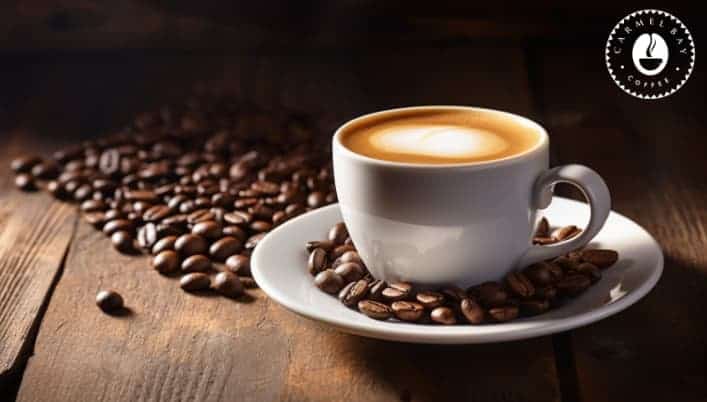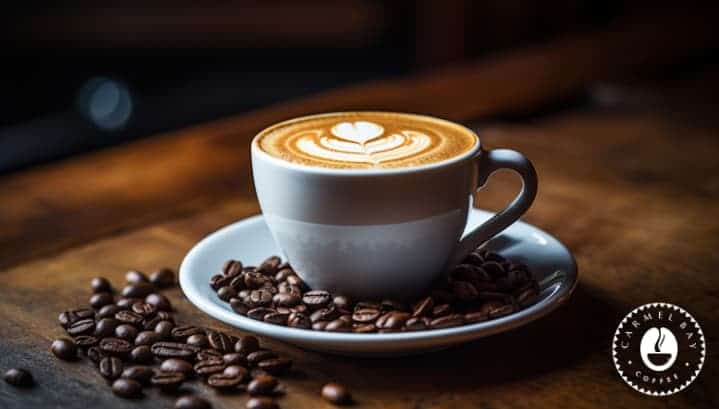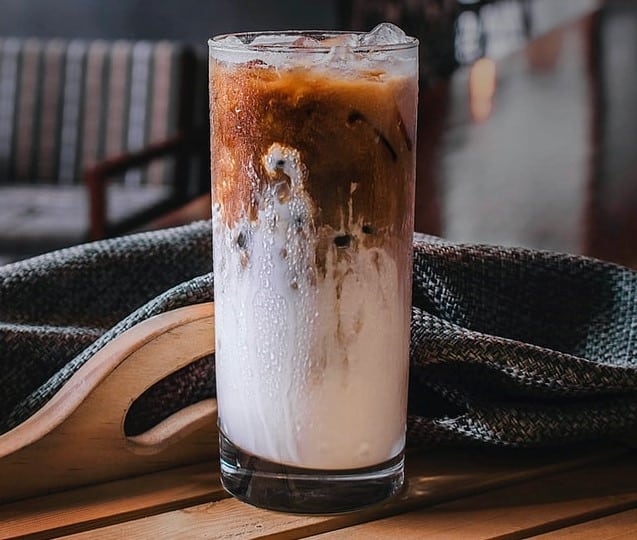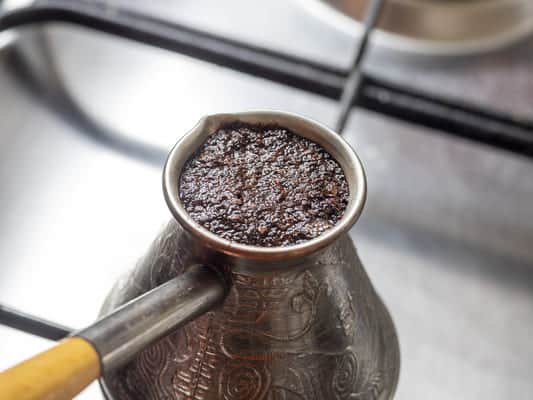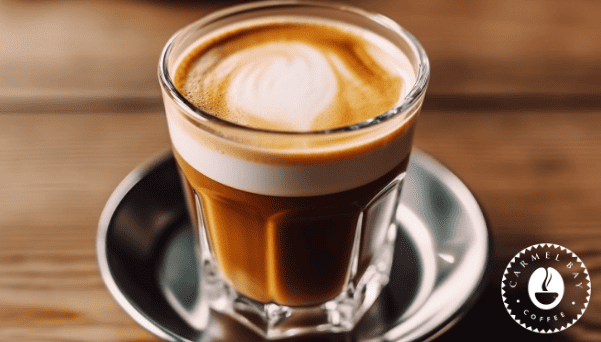Ah, coffee! Is there any other beverage that has carved such a distinct niche in our culture, especially as we approach National Coffee Day? Coffee isn’t just a drink; it’s an experience. From the early morning rush at your local café to the relaxed evening chats with friends, coffee has been there through it all.
National Coffee Day is a testament to its global appeal. Coffee is more than just a caffeine kick. It’s a universal language spoken in the hiss of the espresso machine and the clink of cups on saucers. Its rich history and diverse range of preparations make it a cultural icon across continents.
History of Coffee
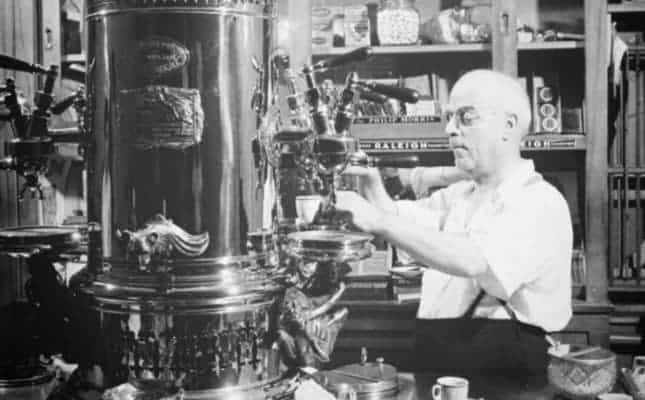
Coffee, a staple in many cultures, boasts a rich tapestry of tales and journeys. Its discovery is mired in legends, and its global spread is a testament to its tantalizing allure.
The Origin of Coffee
Legend places the birthplace of coffee in the highlands of ancient Ethiopia. The narrative of Kaldi, an Ethiopian goat herder, is often recounted:
One day, while tending to his goats, Kaldi observed them acting far more spirited than usual. Curious, he traced their energy to a small shrub with red berries. A little cautious but driven by curiosity, Kaldi decided to sample these berries. The burst of energy he experienced was unparalleled.
Seeking wisdom, Kaldi shared his discovery with a local monastery. However, the monk disapproved, throwing the berries into a fire. As the berries roasted, the monastery was enveloped in a delightful aroma. Realizing the potential, they crushed the roasted beans, brewed a concoction, and the world’s first cup of coffee was born. Word swiftly spread throughout the region, and soon, coffee became an integral part of Ethiopian culture.
The Global Spread of Coffee
Coffee’s journey from Ethiopia is nothing short of epic.
Arabian Peninsula
From Ethiopia, coffee beans made their way to Yemen on the Arabian Peninsula. By the 15th century, Arabs had not only started cultivating coffee but had also commenced trading it extensively. The port city of Mocha, in Yemen, became a significant coffee trade center. It’s also where the drink got its mystique, as coffee became intertwined with Islamic culture, used in religious practices, and cherished in public coffee houses known as “qahveh khaneh.”
Europe
In the 17th century, coffee took Europe by storm. Despite initial resistance (it was once called the “bitter invention of Satan”), the drink quickly gained popularity. By the mid-1600s, there were over 300 coffee houses in London alone. These establishments weren’t just places to enjoy a cup; they became hubs for intellectuals, leading to them being dubbed “penny universities.”
Americas
Europe’s insatiable appetite for coffee spurred its cultivation in the colonies. The climate of the Caribbean and South America proved conducive. The French began growing coffee in Martinique, the Spanish in Central America, and the Portuguese in Brazil. Today, Brazil is one of the largest coffee producers globally.
As coffee cultivation thrived, so did innovations in brewing and consumption. Each region infused its essence, leading to the vast array of coffee drinks we cherish today.
From its legendary discovery in Ethiopia to its proliferation across continents, coffee’s journey is a captivating blend of history, culture, and innovation. It’s not just a beverage; it’s a story that’s been brewing for centuries.
10 Iconic Coffee Drinks For National Coffee Day
Coffee, in its many avatars, has charmed palates and fueled conversations worldwide. Here’s an in-depth look at ten iconic brews:
Espresso
The quintessential Italian coffee, espresso is the backbone of many coffee variants. Made by forcing hot water through finely-ground coffee, this concentrated drink isn’t for the faint-hearted. Rich in flavor, with a golden crema on top, it’s a quick shot of energy, often consumed multiple times a day in Italy.
You can find our recipe and tips for making a perfect Black Eye (double shot of espresso with a regular drip coffee.
Americano
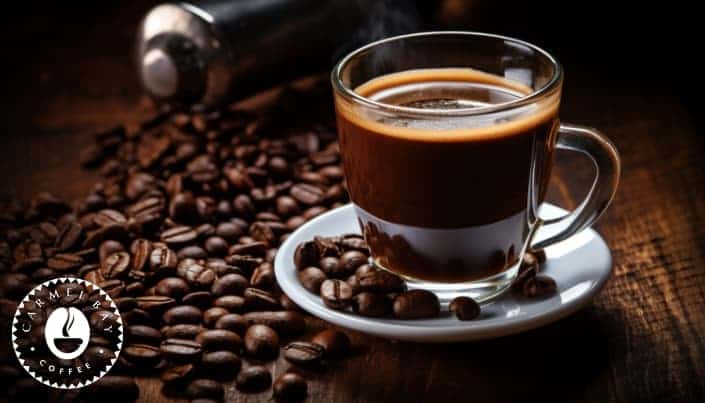
Americano has an intriguing origin. As the story goes, during World War II, American soldiers in Italy found the local espresso too strong. To mimic the coffee they were used to, they diluted it with hot water. The result? An Americano – a stretched espresso, retaining the essence but lighter on the palate.
Please take a look at our Americano recipe here.
Cappuccino
Named after the Capuchin monks because of its resemblance to their brown robes, cappuccino is a comforting blend of equal parts espresso, steamed milk, and frothy milk foam. The drink offers a beautiful textural experience, moving from the dense foam on top to the liquid coffee below.
There’s a ton of ways to make a cappuccino, but did you know it doesn’t take a machine to make a cappuccino?
Macchiato
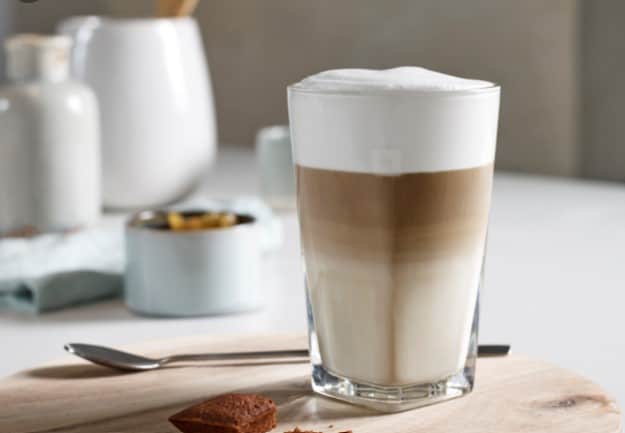
Macchiato, translating to ‘stained’ in Italian, is essentially an espresso stained or marked with a dollop of frothy milk. It’s a midway point between an espresso and a cappuccino, ideal for those wanting just a hint of milkiness.
Simple yet delightful, a macchiato is art in a cup. Discover the nuances of making it with our detailed guide.
Mocha
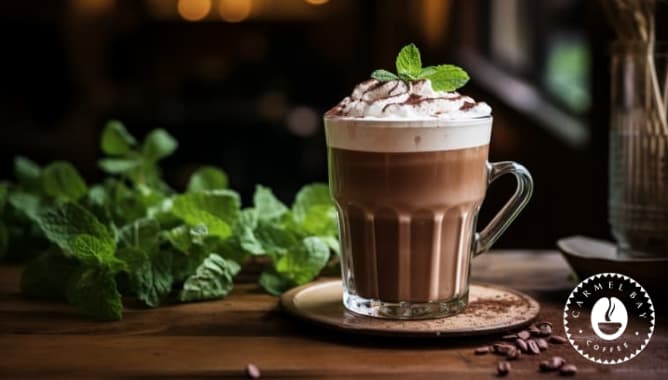
A treat for chocolate lovers, the mocha is a delightful fusion of espresso, steamed milk, and chocolate syrup, often topped with whipped cream. Drawing its name from the Yemeni port of Mocha, historically linked with chocolatey coffee beans, this drink is dessert, and coffee rolled into one.
When coffee meets chocolate, magic happens. Whip up your own mocha with this irresistible recipe.
Flat White
The flat white hails from the Southern Hemisphere, with both Australia and New Zealand claiming its invention. What differentiates it from a latte or cappuccino is the microfoam—a creamy, velvety steamed milk poured over a double shot of espresso. It’s smooth, robust, and lacks the frothy cap of its counterparts.
The Aussies and Kiwis sure know their coffee. Try your hand at making a smooth Flat White using our recipe.
Cold Brew Coffee
For those torrid days when a hot coffee feels overwhelming, cold brew comes to the rescue. Coarse coffee grounds are soaked in cold water for 12-24 hours. The resultant brew is smooth, mellow, and less acidic, perfect over ice.
Patience is the key to a delicious cold brew. Unlock the secrets of this refreshing coffee with our recipe.
Turkish Coffee
A cultural treasure, Turkish coffee is unfiltered, made with finely ground beans simmered in a special pot called a ‘cezve.’ The coffee is sweetened and sometimes spiced with cardamom. The grounds settle at the bottom, leaving a thick, flavorful concoction. Tradition dictates reading one’s fortune from the coffee grounds left behind.
Ready for a strong and traditional brew? Here’s how you can prepare authentic Turkish coffee at home.
Café Au Lait
Directly translating to ‘coffee with milk,’ café au lait is a French staple. While it sounds simplistic, the balance is key. Combining equal parts brewed coffee and steamed milk, it’s milder than an espresso-based drink but still offers a caffeine kick.
Cortado
From the Spanish verb ‘cortar’, meaning to cut, a cortado is espresso cut with a small amount of warm milk to reduce its acidity. Common in Spain and Portugal, it offers a balanced strength, perfect for a mid-afternoon sip.
Looking for a balance between strong espresso and a touch of milk? Learn to prepare a comforting Cortado with this recipe.
Interested in delving deeper into the world of coffee concoctions? Explore our comprehensive collection of articles on coffee drinks, where each brew tells a story of tradition, taste, and technique. From the robust Espresso to the velvety Flat White, journey through a world of flavors.
The Cultural Impact of Coffee Drinks
Coffee isn’t just a beverage; it’s an emblem of cultural exchange, an agent of change, and a testament to human creativity. Across the globe, every region has added its unique touch to coffee, infusing it with local traditions, values, and flavors.
- Community and Connection: Coffee houses, whether it’s the qahveh khaneh in the Middle East or the vibrant cafés of Paris, have always been places of social gathering. They’ve played pivotal roles as hubs of intellectual discourse, political debates, and artistic expression.
- Global Trade and Colonial Histories: The popularity of coffee drove European powers to establish plantations in their colonies, reshaping economies and societies. Countries like Brazil, Colombia, and Vietnam have deeply entwined histories with coffee cultivation.
- Craftsmanship and Innovation: From the intricate preparation of Turkish coffee, demanding patience and precision, to the scientific approaches of modern specialty coffee shops, each method reflects a commitment to craft and innovation.
- Cultural Adaptations: The Swedish ‘fika’, a coffee break that’s more about socializing than the brew, or the Italian espresso rituals, are cultural practices that orbit around coffee, showcasing its influence on daily life and traditions.
- Art and Aesthetics: Latte art, meticulously designed coffee shops, and even cinematic moments (think of the countless movie scenes set in coffee shops) underscore coffee’s influence on design and art.
The Significance of National Coffee Day
For many, coffee is more than just a morning ritual or an afternoon pick-me-up; it’s a way of life. National Coffee Day, celebrated on September 29th, serves as an homage to this beloved beverage and its undeniable impact on our lives and culture.
A Celebration of History
Coffee has a rich and storied history that spans continents and centuries. From legends of Ethiopian shepherds to European coffee houses, this day reminds us of coffee’s journey and the global community it has fostered.
Acknowledging the Hands Behind the Cup
This day also shines a spotlight on the labor-intensive process of coffee production. From farmers who cultivate coffee beans in tropical climates to the local baristas who craft each drink with precision, National Coffee Day is a nod to the hard work and passion of these individuals.
Promotions and Goodwill
Many coffee shops and businesses recognize National Coffee Day by offering special promotions, discounts, or even free cups of coffee. Beyond the promotions, some establishments use this day as an opportunity to raise awareness and funds for coffee-related charities and causes.
Spreading Coffee Culture
National Coffee Day is an opportunity for enthusiasts to share their love for coffee. Whether it’s introducing a friend to a new brew, attending coffee workshops, or participating in coffee tasting sessions, the day offers myriad ways to immerse oneself in coffee culture.
A Nudge to Try Something New
With the ever-evolving world of coffee, National Coffee Day can be the push one needs to step out of their comfort zone. Be it a new brewing method, a different type of bean, or an exotic coffee drink from another part of the world, the possibilities are endless.
In essence, National Coffee Day isn’t just another day on the calendar. It’s a reflection of our collective appreciation for a drink that offers comfort, community, and a moment of pause in our hectic lives.
National Coffee Day Around the World

Coffee, the globally adored beverage, is celebrated in various ways in different corners of the world. While the essence of the celebration revolves around the love for coffee, each country adds its unique twist, reflecting its coffee culture and traditions.
| Country | Date of Celebration | Description |
|---|---|---|
| United States | September 29th | Acknowledged with many cafes and restaurants offering free or discounted coffee as a blend of promotion and appreciation for the country’s coffee culture. |
| Italy | No Specific Date | Though without a specific “Coffee Day”, the tradition of “la pausa,” a short coffee break, is sacred. During global celebrations, emphasis is on the art of espresso-making. |
| Japan | October 1st | With the rise of its intricate coffee culture, Japanese cafes might introduce special brews or host workshops on drip coffee methods. |
| Brazil | May 24th | Celebrations honor both the drink and the immense labor behind it. Events and festivals highlight the role of farmers and promote coffee consumption. |
| Ethiopia | October 1st | Traditional coffee ceremonies become even more widespread, with communities gathering to share stories over pots of freshly brewed coffee. |
| Australia & New Zealand | No Fixed Date | Many cafes and businesses participate in the global celebrations on September 29th, showcasing unique coffee creations like the Flat White. |
| Sweden | October 1st | Emphasis on “fika” breaks – where people enjoy coffee and sweets. Bakeries might offer special pastries to accompany coffee on this day. |
The Future of Coffee: Trends to Watch
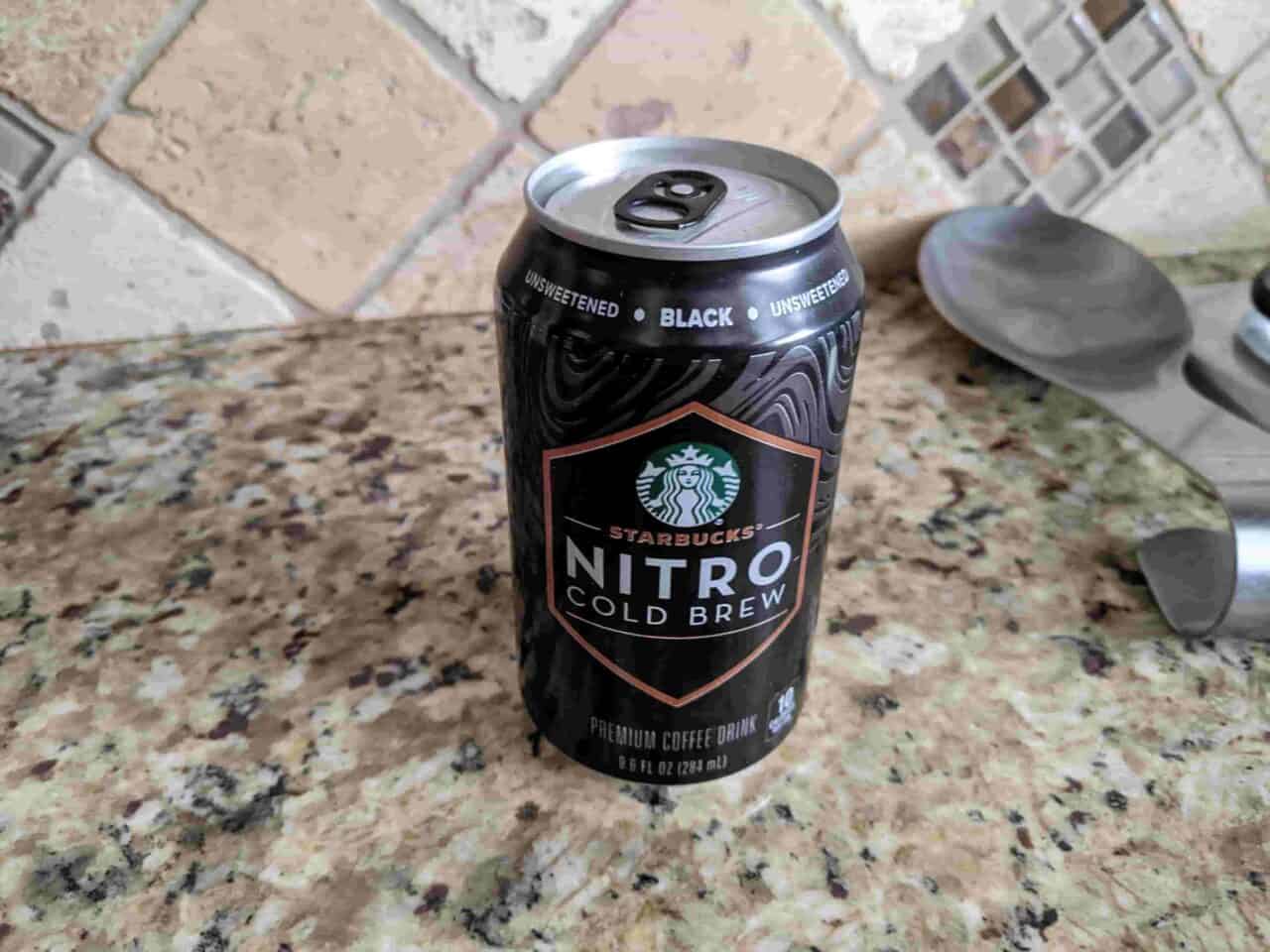
As our world continues to evolve, so does the realm of coffee. The beverage that once started as a simple drink has transformed into an intricate art with its own set of innovations and emerging trends. Let’s take a sneak peek into the future and see what’s brewing in the coffee world.
Nitro Cold Brews
A fusion of craft beer and coffee culture, Nitro Cold Brew adds nitrogen to the coffee, resulting in a creamy texture and a frothy top. It’s like having a draft beer, but it’s coffee!
Mushroom Coffee
For the health-conscious and the adventurous, mushroom coffee is making waves. A blend of ground coffee and mushroom extracts, it promises a caffeine kick minus the jitters, and with added health benefits.
Coffee Leaf Tea
It’s not about the bean but the leaves! This trend involves brewing the leaves of the coffee plant, offering a mild caffeinated drink rich in antioxidants.
Sustainability and Traceability
More consumers are demanding to know where their coffee comes from. This has led to an increase in direct-trade practices, ensuring better quality and more ethical sourcing.
Specialty Decafs
Gone are the days when decaf was the inferior cousin. With improved processing methods, expect to see high-quality decaffeinated coffees that don’t compromise on flavor.
Coffee in Cocktails
Beyond the espresso martini, bartenders are getting creative. From coffee-infused spirits to unique coffee cocktails, the blend of caffeine and booze is getting more inventive.
Tech-Driven Brews
The tech world is merging with barista culture. Expect smart coffee machines that brew your morning cuppa to your exact preferences and apps that track the nuances of your beans’ flavor profile.
In a nutshell, the coffee industry shows no signs of slowing down. As we look to the future, it’s clear that innovation, sustainability, and a commitment to quality will drive the next wave of coffee trends. So, as you sip on your current favorite brew, get ready to explore a world of new flavors, methods, and experiences in the world of coffee.
FAQs For National Coffee Day
When Is National Coffee Day?
Celebrated Globally, National Coffee Day Is on September 29th. However, Some Countries Have Their Unique Dates.
Where Did Coffee Originally Come From?
Legend Traces Coffee’s Roots to Ancient Ethiopia, Where Its Energizing Properties Were Discovered, Eventually Spreading to Various Parts of the World.
What’s the Difference Between a Cappuccino and a Macchiato?
While Both Use Espresso as a Base, a Cappuccino Combines It with Steamed Milk and Foam in Equal Measures. A Macchiato, on the Other Hand, Is Predominantly Espresso, Marked with a Touch of Foam.
How Is Cold Brew Different from Regular Iced Coffee?
Cold Brew Involves a Slow Steeping Process in Cold Water, Creating a Smoother, Less Acidic Brew. Iced Coffee, However, Is Typically Hot-Brewed Coffee That’s Cooled and Served Over Ice.
Which Coffee Has the Most Caffeine?
Caffeine Content Varies with Preparation Methods and Serving Sizes. While Drip Coffee or Cold Brew Might Contain More Caffeine Overall, Espresso Is More Concentrated. However, If You Were to Drink the Same Volume of Each, Drip Coffee Would Typically Reign Supreme in Caffeine Content.
Wrapping Up National Coffee Day
Coffee, in its myriad forms, offers more than just a sensory experience. It’s a passport to different cultures, histories, and traditions. Each cup narrates tales of trade routes, ancient rituals, and communal gatherings. As we celebrate National Coffee Day, let it remind us of the rich tapestry that coffee weaves, binding us all in shared experiences and stories. So, the next time you sip on a brew, remember: you’re partaking in a global ritual, one that’s been refined over centuries.
Ever dream of waking up to a fresh batch of premium coffee beans delivered right to your doorstep? Dive into our comprehensive ‘Guide to the Best Coffee Subscriptions‘ and discover a world where the finest brews meet convenience. Whether you’re an espresso aficionado or a cold brew lover, there’s a subscription just for you.


